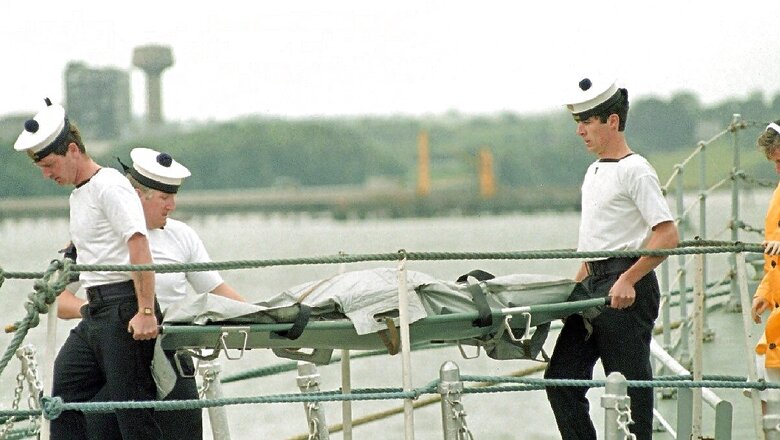
views
A report by Canadian Broadcasting Corporation (CBC) released in 2003 said that the Canadian spy agency CSIS had a mole in the plot to bomb Air India Flight 182 in 1985, citing documents released by the Royal Canadian Mounted Police (RCMP), has started to make rounds on the internet.
The Kanishka bombing refers to the 1985 terrorist attack on Air India Flight 182, killing 329 people. The bomb, planted by Khalistani extremists, exploded mid-air off Ireland’s coast.
Did you know CSIS (Canadian intelligence) had a mole inside the plotters who bombed AI182 Kanishka? They were aware of the plot and withdrew the mole so “he wouldn’t be implicated”. I’m not saying this – @CBCNews cites @rcmpgrcpolice saying this https://t.co/ANCAqCDaiF pic.twitter.com/XB3CPHC6FE— Abhijit Iyer-Mitra (@Iyervval) October 16, 2024
The resurfacing of the almost two decades-old report comes amid deteriorating ties between India and Canada over Canada’s support for separatist Khalistani elements in their country and its allegation that India may have been involved in the killing separatist Khalistani leader Gurpatwant Singh Pannun in 2023 in Surrey, Canada.
A screenshot of the report shared by senior fellow at the Institute of Peace and Conflict Studies Abhijit Iyer-Mitra on X is now making rounds on the internet and across social media outlets.
The documents from 2003 released by the RCMP suggest that ‘CSIS pulled out the mole at the last minute so he wouldn’t be implicated’ and named the mole as Surjan Singh Gill who worked for the CSIS.
The revelation was made when Ajaib Singh Bagri, an accused in the Air India Flight 182 case, was being interviewed by the RCMP.
Surjan Singh Gill posed as consul-general of Khalistan and RCMP inspector Lorne Schwartz said Gill was directed by “certain people” to stay involved and learn what was going on.
“They told him to get out of there. That things are happening and you can’t be seen as part of that,” RCMP official Jim Hunter said.
This development occurred just days before the bombing.
Gill later moved from Canada to settle in London. He was never charged in connection with the 1985 bombing of Air India Flight 182, which claimed the lives of 329 people off the coast of Ireland.
CSIS destroyed hundreds of wiretaps linked to the Air India investigation, an act the Crown acknowledged in court as ‘unacceptable negligence’.
RCMP CSIS Blame Game
A 2010 report held the Canadian government responsible for failing to prevent the tragedy, citing a rift between the Royal Canadian Mounted Police (RCMP) and the spy agency CSIS. The report criticised the poor coordination of national security efforts between the two agencies.
Henry Jensen, former deputy commissioner of operations for the RCMP, testified to the inquiry panel that the bombing represented an ‘intelligence failure of massive proportions’. He described it as ‘the biggest and most disastrous civil intelligence failure that Canada has faced’.
The Washington Post reported that CSIS had access to information that could have thwarted the Kanishka bombing. However, according to court documents, the Canadian Security Intelligence Service withdrew an agent who had infiltrated the militant group just days before the attack.


















Comments
0 comment